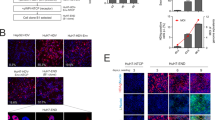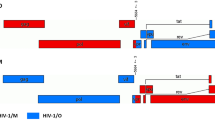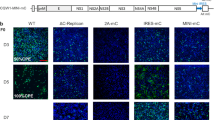Abstract
To investigate the possibility of using hepatitis B virus (HBV) as a vector, the tat gene from human immunodeficiency virus type 1 (HIV-1) was inserted into the full-length HBV genome in-frame with the polymerase (pol) open reading frame in the tether region and downstream of the preS1 promoter. We demonstrated that the tat gene was expressed with full activity in transactivating the HIV-1 long terminal repeat (LTR). The expression of the tat gene in the context of the HBV genome in chicken hepatoma and human cervical carcinoma cells, however, was not as efficient as that in human hepatoblastoma cells, which reflects the cellular and species specificity of promoters of hepadnaviruses. Detection of RNA expressed from this HBVtat recombinant revealed transcription of the tat gene by two promoters: the core/pol promoter and the preS1 promoter. A Pol-Tat fusion protein expressed by the core/pol promoter did not seem to contribute to the tat transactivation activity of the HBVtat recombinant since a frameshift mutation in the pol gene did not affect the recombinant tat function. The functional tat protein, therefore, was most likely expressed as a Tat-Pol fusion product. Endogenous polymerase assays showed that the pol protein expressed from the HBVtat recombinant was still active although at a reduced level. Hepatitis B surface antigens and e antigen produced from this recombinant were detected at similar levels as those produced from the wild type. Notably, the capability of forming complete HBV particles was still retained. These studies indicate the potential of constructing HBV as a replicative vector. We also showed that manipulation of a nonreplicative HBV vector was possible. Expression of the HBV polymerase could be completely eliminated and replication of the nonreplicative HBV recombinant could be supported by Pol trans- complementation.
This is a preview of subscription content, access via your institution
Access options
Subscribe to this journal
Receive 12 print issues and online access
$259.00 per year
only $21.58 per issue
Buy this article
- Purchase on Springer Link
- Instant access to full article PDF
Prices may be subject to local taxes which are calculated during checkout
Similar content being viewed by others
Author information
Authors and Affiliations
Rights and permissions
About this article
Cite this article
Chaisomchit, S., Tyrrell, D. & Chang, LJ. Development of replicative and nonreplicative hepatitis B virus vectors. Gene Ther 4, 1330–1340 (1997). https://doi.org/10.1038/sj.gt.3300544
Received:
Accepted:
Issue Date:
DOI: https://doi.org/10.1038/sj.gt.3300544
Keywords
This article is cited by
-
Replicative retroviral vectors for cancer gene therapy
Cancer Gene Therapy (2003)
-
Viral vectors for gene therapy: the art of turning infectious agents into vehicles of therapeutics
Nature Medicine (2001)



